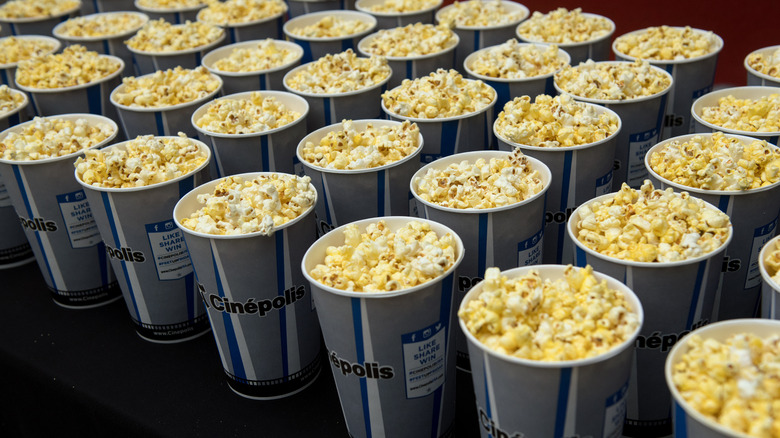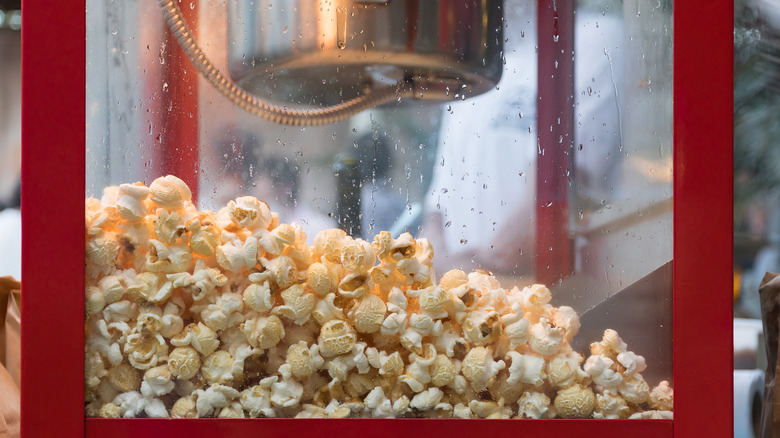The Pivotal Moment Popcorn Solidified Its Place In Movie Theaters
Today, you'll find a concession stand selling bags of popcorn at nearly every movie theater in America. It's easy to assume that movie theaters and popcorn have always had a relationship, so it may come as a surprise to learn that early theater owners were reluctant to sell popcorn on their premises.
According to Serious Eats, the first popcorn may have been cultivated 6,700 years ago in Peru. From there, popcorn spread throughout the Americas thanks to Native American trade routes. This early popcorn was far crunchier than the snack we know today; over the years, humans cultivated corn to produce light, fluffy kernels.
Popcorn proved to be a hit with European settlers, too. Corn, including popcorn, soon became a major cash crop throughout the Midwestern United States — but its popularity really took off after 1885, when Charles Cretors invented a portable popping machine. Vendors carried around Cretors' machine and used it to mass-produce large batches of popcorn, which they sold to crowds at sporting events and festivals.
Smithsonian writes that, when movie theaters first became widely popular in the late 1920s, popcorn vendors began selling to crowds outside theaters just as they would at other events — to the ire of movie theater owners. Early movie theaters tried to convey a refined image, carpeting their lobbies with expensive rugs in an attempt to replicate the luxurious feel of traditional theaters. Owners worried that concessions — and the accompanying trash — would jeopardize their image.
Theater owners were reluctant to sell popcorn — despite increased profits
Theater managers fought hard to keep patrons from bringing snacks in off the street, but it was a losing battle. According to the New York Times, one concessionaire, Julia Braden, was among the first to be allowed inside the premises. By 1931, her business made her $14,400 a year — equivalent to more than $335,000 in the modern day — even amid the Great Depression. By the mid-'30s, some movie theater managers began installing popcorn machines in their theaters.
Smithsonian notes that, even when popcorn became mainstream, some theaters clung to the idea that concessions were low-class. One theater chain installed popcorn machines in 80 theaters but refused to sell popcorn at their best locations. However, the discrepancy in profits between the two groups of theaters soon made the chain realize the error of their ways.
The popularity of movie theater popcorn only continued to increase through World War II, when sugar rations made other snacks, like candy and soda, scarce. By 1945, movie theaters served more than half of the popcorn consumed in America.
According to the New York Times, one early movie theater entrepreneur advised: "Find a good popcorn location and build a theater around it." This advice still rings true today. Some theaters make as much as 85 percent of their profits from concessions; Stanford Business notes that the typical theater makes 40 percent of its profits from snacks.

